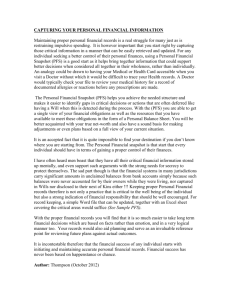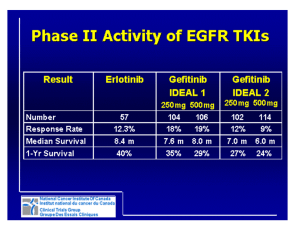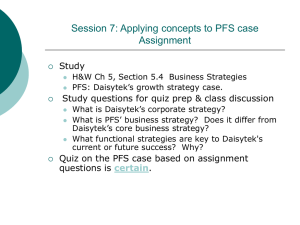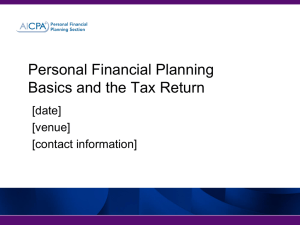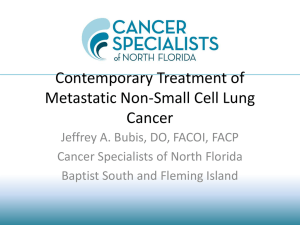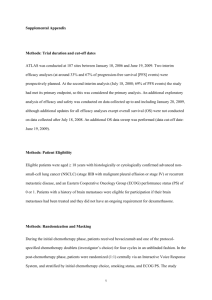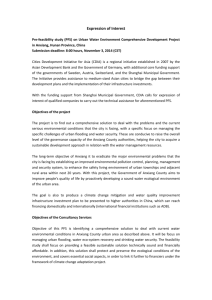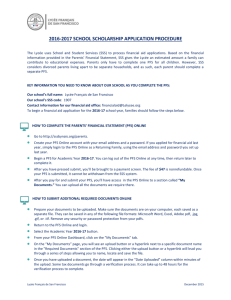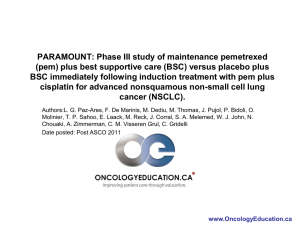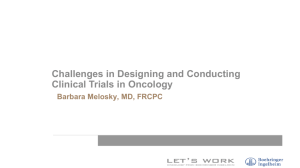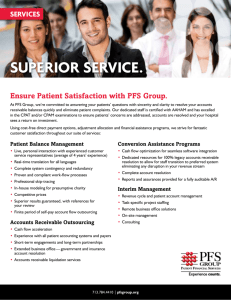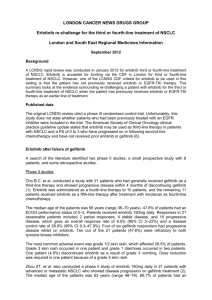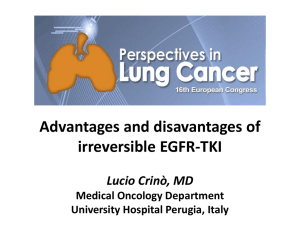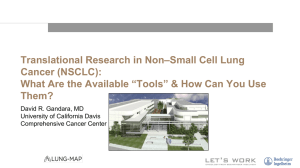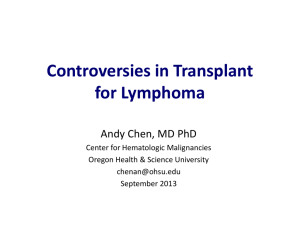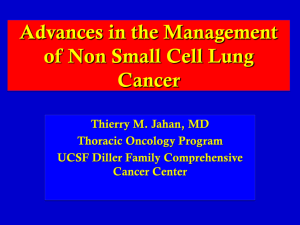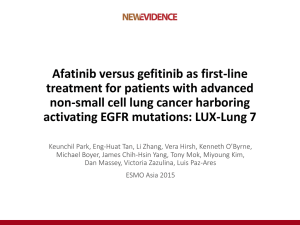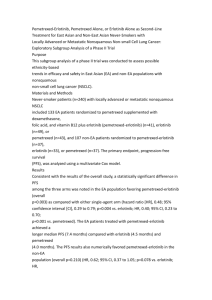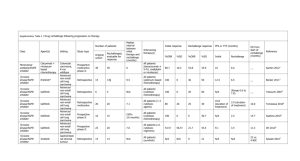TrialCharacteristics.PhaseII
advertisement
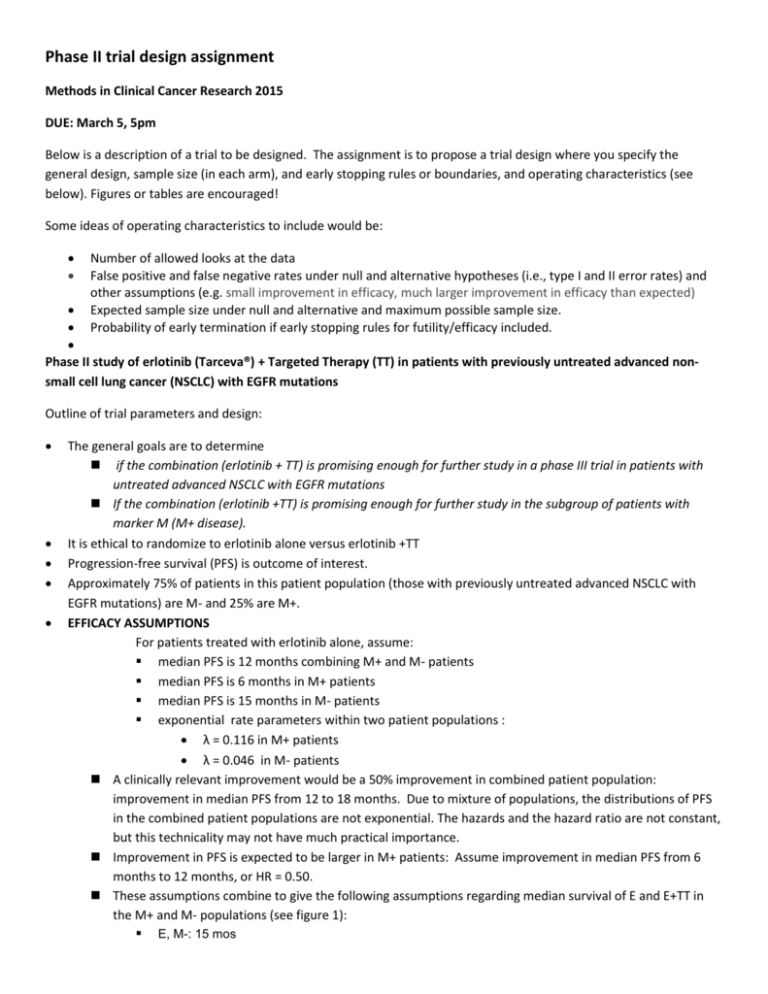
Phase II trial design assignment Methods in Clinical Cancer Research 2015 DUE: March 5, 5pm Below is a description of a trial to be designed. The assignment is to propose a trial design where you specify the general design, sample size (in each arm), and early stopping rules or boundaries, and operating characteristics (see below). Figures or tables are encouraged! Some ideas of operating characteristics to include would be: Number of allowed looks at the data False positive and false negative rates under null and alternative hypotheses (i.e., type I and II error rates) and other assumptions (e.g. small improvement in efficacy, much larger improvement in efficacy than expected) Expected sample size under null and alternative and maximum possible sample size. Probability of early termination if early stopping rules for futility/efficacy included. Phase II study of erlotinib (Tarceva®) + Targeted Therapy (TT) in patients with previously untreated advanced nonsmall cell lung cancer (NSCLC) with EGFR mutations Outline of trial parameters and design: The general goals are to determine if the combination (erlotinib + TT) is promising enough for further study in a phase III trial in patients with untreated advanced NSCLC with EGFR mutations If the combination (erlotinib +TT) is promising enough for further study in the subgroup of patients with marker M (M+ disease). It is ethical to randomize to erlotinib alone versus erlotinib +TT Progression-free survival (PFS) is outcome of interest. Approximately 75% of patients in this patient population (those with previously untreated advanced NSCLC with EGFR mutations) are M- and 25% are M+. EFFICACY ASSUMPTIONS For patients treated with erlotinib alone, assume: median PFS is 12 months combining M+ and M- patients median PFS is 6 months in M+ patients median PFS is 15 months in M- patients exponential rate parameters within two patient populations : λ = 0.116 in M+ patients λ = 0.046 in M- patients A clinically relevant improvement would be a 50% improvement in combined patient population: improvement in median PFS from 12 to 18 months. Due to mixture of populations, the distributions of PFS in the combined patient populations are not exponential. The hazards and the hazard ratio are not constant, but this technicality may not have much practical importance. Improvement in PFS is expected to be larger in M+ patients: Assume improvement in median PFS from 6 months to 12 months, or HR = 0.50. These assumptions combine to give the following assumptions regarding median survival of E and E+TT in the M+ and M- populations (see figure 1): E, M-: 15 mos E, M+: 6 mos E + TT, M-: 21 mos E + TT, M+: 12 mos Accrual rate is assumed to be 8 patients per month and assumed to be uniform over the course of the study. Study should not take more than 4 years to complete the final analysis. We will not include early stopping rules for unacceptable toxicity (i.e.no early stopping for safety). We will assume real-time knowledge of deaths and progressions: There is no interval censoring There is no lag time for reporting of results 1.0 Figure 1: Assumptions regarding distribution of progression-free survival in patients treated with erlotinib alone (solid) and erlotonib + TT (dashed). λ refers to exponential rate parameter. Combined curves were generated via simulation. 0.6 0.4 0.2 0.0 Proportion Progression-Free 0.8 E alone, M+: = 0.116 E alone, M- : = 0.046 E alone, combined E+TT, M+: = 0.058 E+TT, M- : =0.033 E+TT, combined 0 6 12 18 24 Time (months) 30 36 42 48
